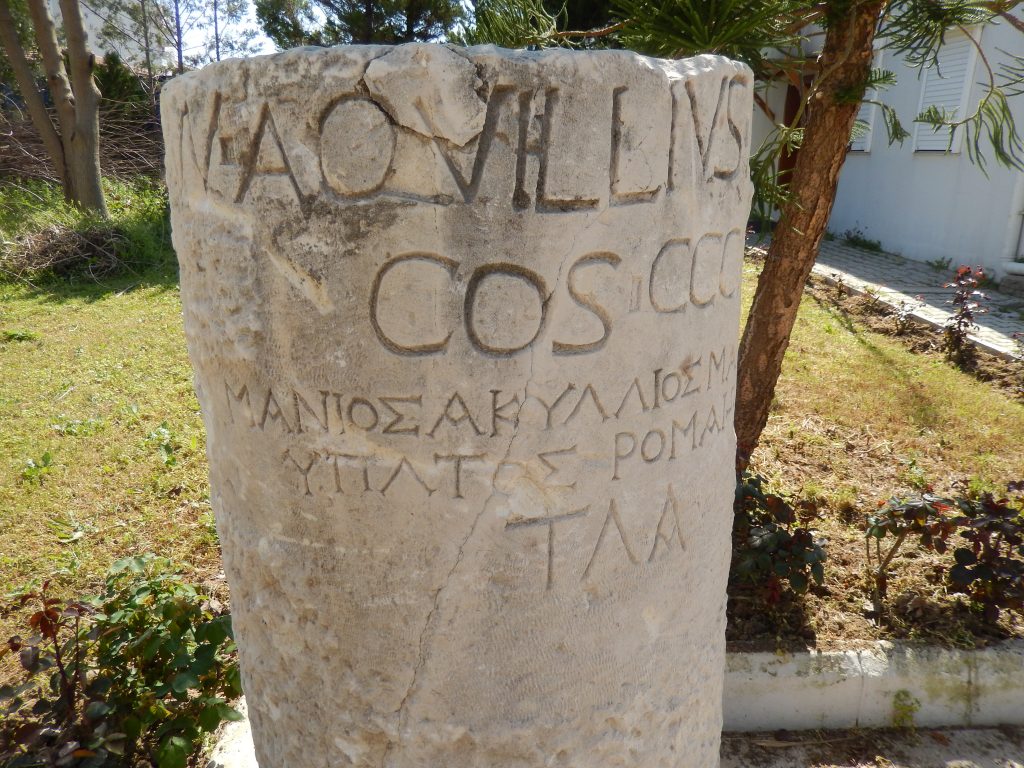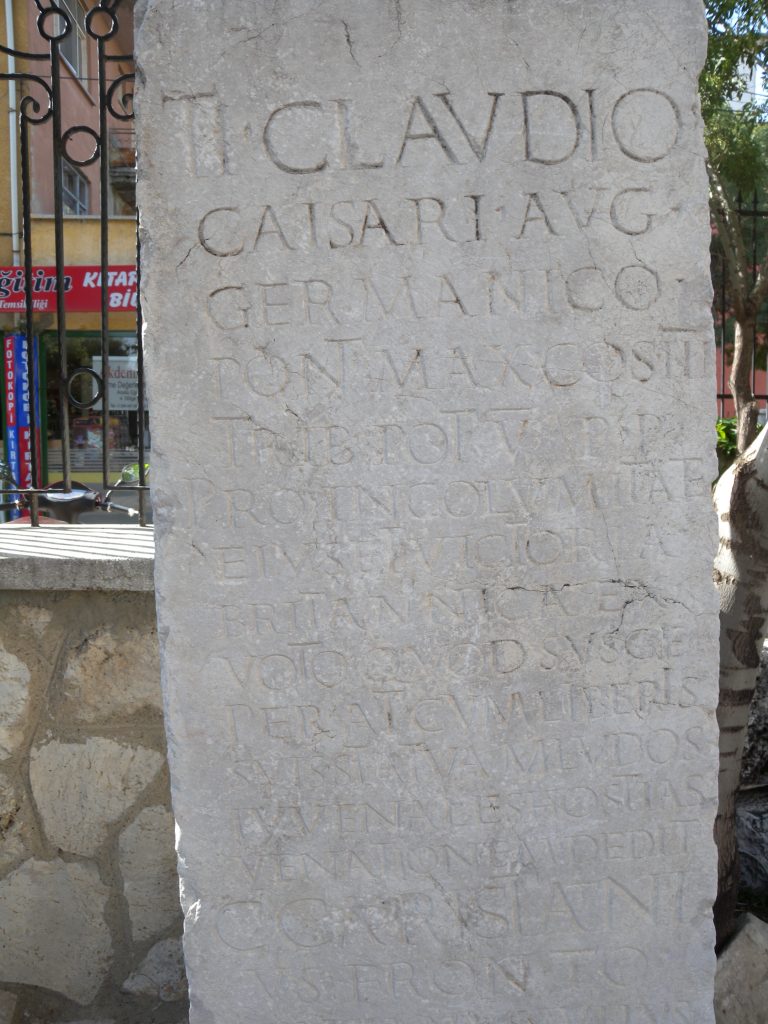 |  |
Welcome to the Milestones main page. Milestones (also known as milliaria or lapides) were an integral part of the Roman road system. The Roman mile (mille passum) was measured by 1,000 paces with each pace being five Roman feet. Therefore one Roman mile would equal 5,000 feet or about 1, 480 meters/4,850 ft. in today’s measurements.
Milestones were used to mark distances on the ancient Roman road systems. These obelisks were made of marble or granite and can still be found today with their inscriptions weathered, but still readable. Many milestones have been moved from their original positions to be put in museums, to make way for modern roads, and to be removed from farmers’ fields.
Milestones were in use by the Romans already in the Republican period, but became much more common in the provinces from Augustus on. Some were erected along the unpaved major highways of Anatolia already in the second century B.C. Milestones would have been erected at the time of the construciton of the Via Sebaste, the first paved road in the region.
The milestones were simple pillars of stone with inscriptions that included a distance from the start or “head” of the road (caput viae), the name of the Roman official in charge of the construction (or repair work), as well as the name the current consul (during the Republican period) or emperor. In Anatolia the inscriptions were normally bilingual (Latin and Greek).
For a complete list of known milestones in the various sections of Anatolia, see the recent volumes of David French available at the British Institute At Ankara website: BIA electronic monographs.
The following is a list of links to pages on this site which contain information on milestones for the roads described.
Bibliography:
David H. French, Roman Roads and Milestones of Asia Minor, vol. 3: Milestones, fasicle 1: Republican. Electronic Monograph 1 (Ankara: British Institute at Ankara, 2012).